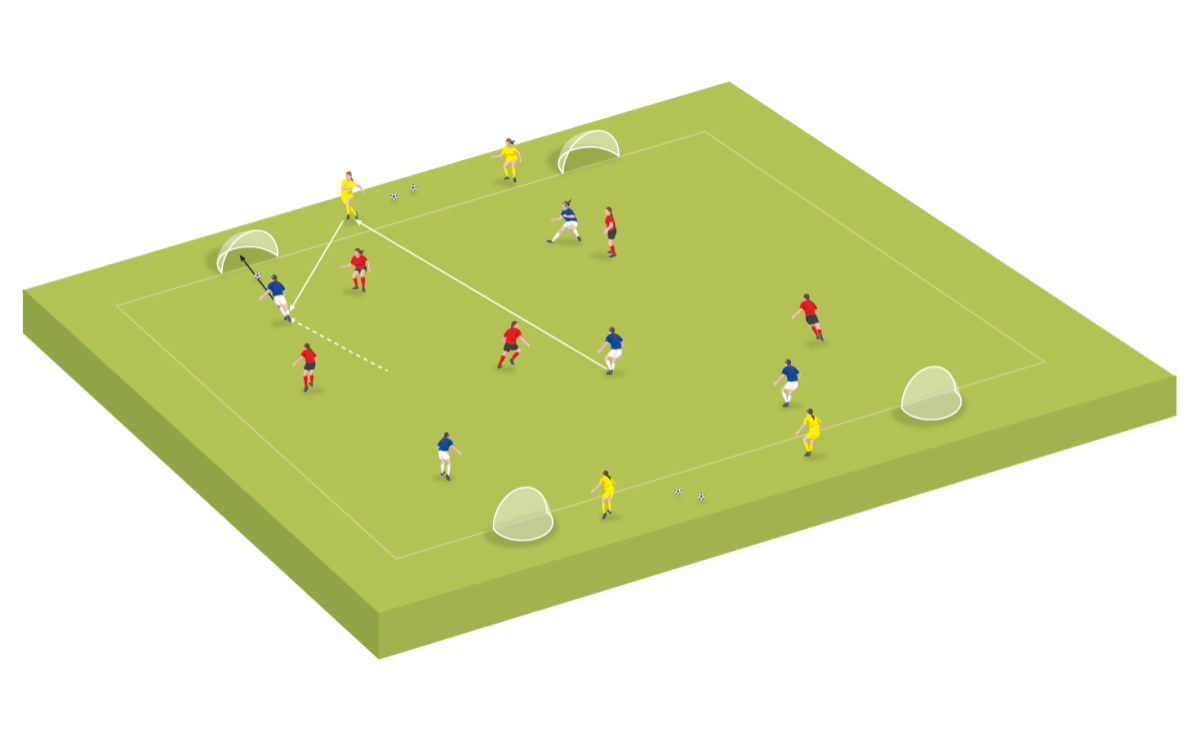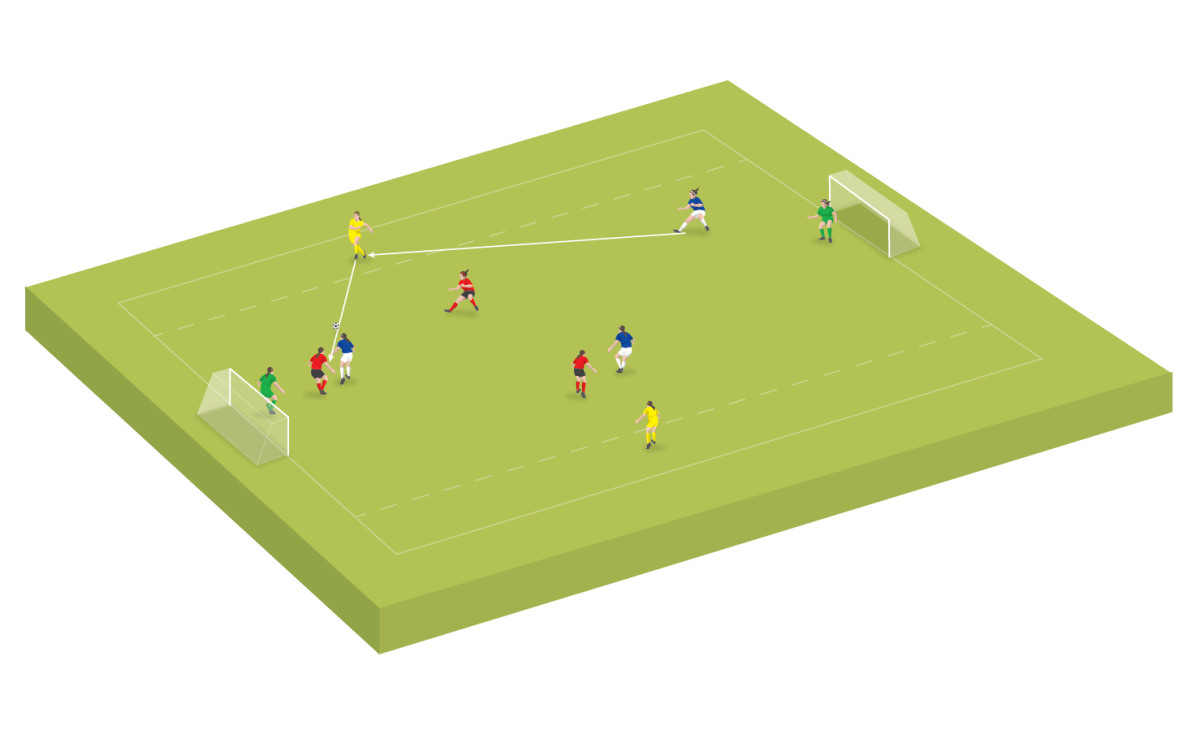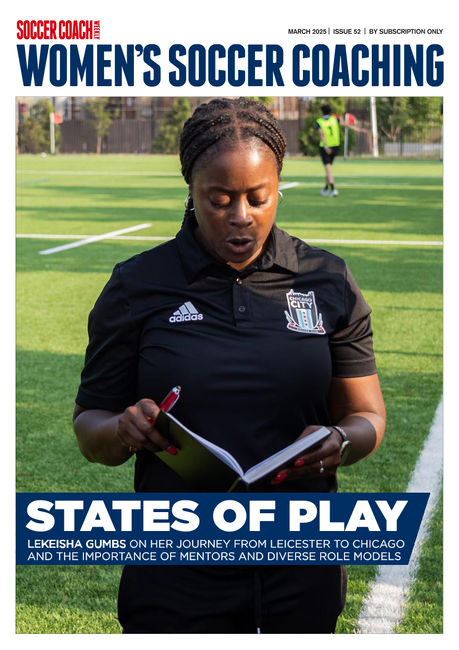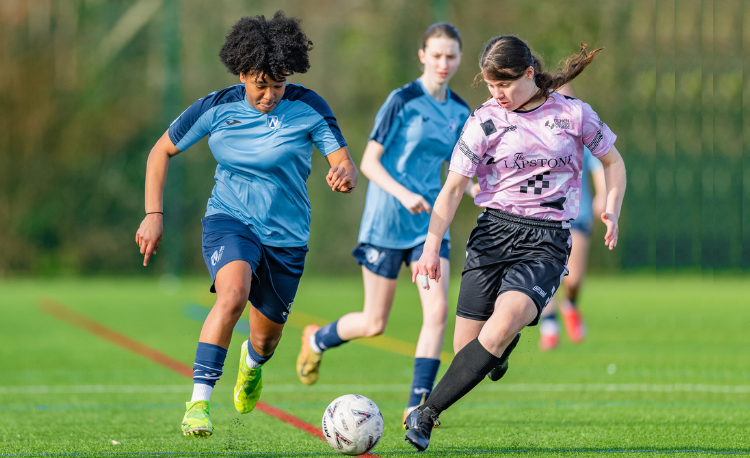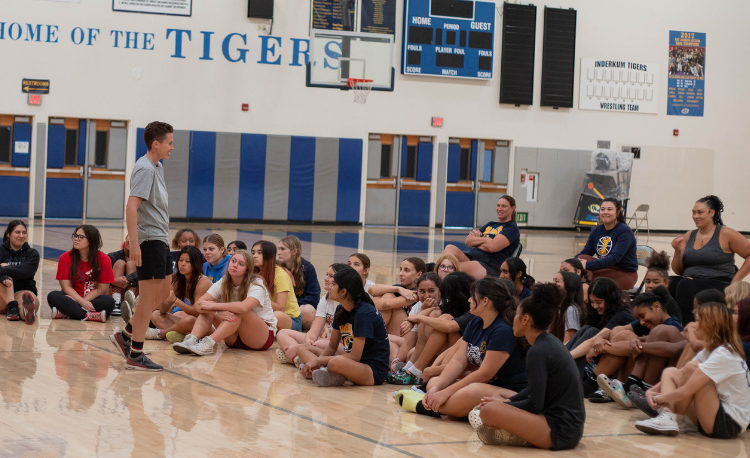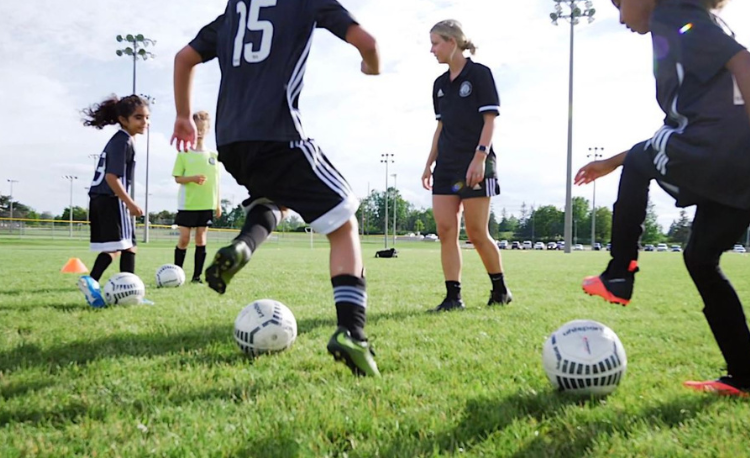You are viewing
1 of your 3 free articles
Neutral positions
If you want to work on certain game-realistic situations, or you simply have an odd number of players, neutral players can pay off, says Fawn Mulholland
Even the most organized coach may encounter an imbalance of players in a training session.
It is often beyond our control that we end up with odd numbers for an activity or game. Something like a phase of play may require a strict set-up with surplus players waiting to participate.
In other more flexible settings, we may incorporate the players instead of watching them wait their turn.
One way to do this is to use neutral players, who work fluidly between teams depending on the game moment or task at hand.
The coaching approach to neutrals may differ depending on the group’s development stage.
In grassroots settings, engaging players is a must, and it can be challenging to facilitate auxiliary activities - so neutral players can be a helpful way to keep engagement and ball-rolling time high.
In performance settings, neutrals may be useful tactical tools to educate players on transitional moments and imbalanced numbers.
We may consider neutrals as operational or development-centric. Operational applications assist the coach with smooth session flow and delivery, while development-centric uses carry their own coaching weight as described in the next four illustrated examples
Neutrals for the in-possession team
This is likely the most common use of neutral players when they are floating between teams but are constantly participating in the attacking phase of play, i.e. with the in-possession team.
These players may be used within a free-flowing game, as target players outside the playing area or perhaps as bounce-pass options.
Neutrals for the out-of-possession team
Related Files
Using neutral players to bolster the defending team is a worthwhile mechanism for creating numbers-down attacking situations - or, conversely, numbers-up defensive opportunities.
These scenarios allow coaches to elicit opportunities to coach defensive principles related to delaying, denying and defending (or the coach’s vernacular).
Neutrals based on geography on the pitch
Players’ decisions are heavily influenced by pitch geography and variables, such as the location of the ball, team-mates, opponents and goals.
Using neutrals in select areas can be an effective way to create specific, game-realistic imbalances.
You may use neutrals as wide players, working in either direction depending upon the team in possession.
This is a quick remedy for coaches who may lack numbers in particular positions at training.
Neutrals as additional support outside the playing area
The positioning of neutral players can enhance game-realism, such as progressive passes into lay-offs for a finish on goal.
Using neutral players outside the playing area may also allow for a change of direction.
Players may be used as targets for one team to pass into to score, with the target player restarting build-up for the opposite team, creating a quick transition.
One final way you may incorporate neutrals is through tasks. These may enhance individual player development for four-corner elements (technical, tactical, psychological and social).
For example, we may incorporate additional incentives that add an extra challenge outside the pitch to gain points.
By using neutral players for such tasks, we can prevent an imbalance in a small-sided game and isolate key areas for development which may otherwise receive limited attention.
You may even be able to use an injured player for an off-pitch task to keep them involved in the group.
Though sometimes considered unrealistic, neutrals may prove helpful for both coaching flow and player development.
Keep some of these ideas ready in your back pocket for the next time you need to drill down on imbalances in player numbers, individual development or specific situation discovery.
Newsletter Sign Up
Newsletter Sign Up
Discover the simple way to become a more effective, more successful soccer coach
In a recent survey 89% of subscribers said Women's Soccer Coaching makes them more confident, 91% said Women's Soccer Coaching makes them a more effective coach and 93% said Women's Soccer Coaching makes them more inspired.
*includes 3 coaching manuals
Get Inspired
All the latest techniques and approaches
Women's Soccer Coaching offers proven and easy to use soccer drills, coaching sessions, practice plans, small-sided games, warm-ups, training tips and advice.
We've been at the cutting edge of soccer coaching since we launched Soccer Coach Weekly in 2007, creating resources for the grassroots youth coach, following best practice from around the world and insights from the professional game.

